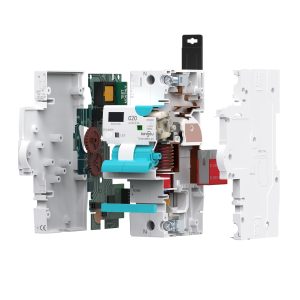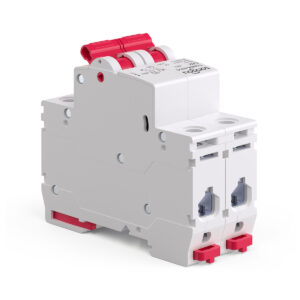
RCBO Trips at Night? Causes, Diagnosis, and Lasting Fixes
RCBO Trips at Night? Causes, Diagnosis, and Lasting Fixes Already know what an RCBO is? Great. This page skips the basics and focuses on nocturnal
1. Residential
In homes, smart meters provide detailed information on electricity, gas, or water usage. Residents can monitor their consumption, receive alerts, and manage their energy use more effectively.
2. Commercial
Businesses benefit from smart meters by optimizing energy usage and reducing operational costs. Smart meters help identify energy-intensive processes, enabling businesses to implement energy-saving strategies.
3. Industrial
In industrial settings, smart meters provide detailed data on energy consumption, helping to improve overall efficiency. They also support predictive maintenance by identifying unusual patterns that may indicate equipment issues.
4. Utility Companies
Utility companies use smart meters to manage the distribution network more efficiently. The real-time data helps in demand forecasting, grid management, and outage detection, improving overall service reliability.

Taking Tongou’s smart meter TO-Q-SYS as an example, there are two ways to read the meter:
①It can be viewed directly through the electronic display on the front of the meter.
②When the smart meter is connected to the matching tuya smart life app, we can view the data directly from the mobile app, anytime and anywhere.
A smart meter looks similar to conventional meters but with a modern, digital interface. It usually has a compact design equipped with a screen displaying usage data. Some smart meters also have touch-sensitive buttons or LED indicators that signify different functions or states, such as data transmission or alerts. Additionally, they are built with components to support wireless communication for remote data readouts. Depending on the type (electricity, gas, or water), the shape, and size may vary, but they typically maintain a practical and user-friendly aesthetic to facilitate easy reading and maintenance.
Conventional meters may have sufficed for simple monitoring of energy consumption, but they lag when it comes to supporting the complex grid management and real-time adjustments that modern systems demand. They lack the capability for two-way communication, hindering remote troubleshooting, and they’re unable to adapt to new pricing models.
Unlike their traditional counterparts, smart meters offer a wealth of detailed data, broken down into real-time intervals.These meters are often equipped with an LCD display, which shows real-time consumption statistics to users, this information gets automatically sent to both consumers and utility companies, leading to greater operational efficiency. Smart meters also support two-way communication, enabling both control and monitoring of energy consumption remotely.
Smart meters offer a host of benefits over traditional metering systems:
Real-Time Data: The ability to provide real-time usage statistics enables both consumers and utilities to make more informed decisions about energy usage.
Demand Response: Utilities can more efficiently plan for peak demand times, potentially saving costs and reducing the need for additional energy generation.
Remote Monitoring: These meters can be read remotely, eliminating the need for manual meter readings and potential errors or fraud associated with it.
Dynamic Pricing: Real-time data also allows utilities to introduce more dynamic pricing models that can better reflect the actual costs of providing energy at different times.
Environmental Impact: By helping to identify and eliminate inefficiencies in energy consumption, smart meters can also play a role in reducing an individual’s or organization’s carbon footprint.
Smart meters are designed to integrate seamlessly with modern communication technologies. They often employ Wi-Fi and Zigbee protocols, which support a broad ecosystem of smart home devices like smart thermostats and energy-efficient LED lighting systems. This enables the formation of a smart grid within the household, providing a more sustainable approach to energy use. Zigbee, due to its low power consumption, is increasingly becoming the go-to communication protocol for IoT devices.
Given the alarming rate of climate change, there’s an urgent need for energy-efficient solutions. Smart meters can play a pivotal role in fostering sustainability by enabling better grid management and reducing energy waste. The data they collect can help utilities switch to renewable energy sources at optimal times, thereby lowering greenhouse gas emissions.
Smart meters are developed with strong security protocols, including encryption and secure key management, to protect against unauthorized access and data breaches. Many smart meters also employ security features like intrusion detection systems and are regularly updated to combat emerging threats.
Smart meters collect a wealth of user data, raising concerns about data privacy. However, regulations often govern the usage and storage of such data. The General Data Protection Regulation (GDPR) in Europe and similar laws in other regions have set stringent rules for data protection, ensuring user privacy.
Smart meters are not just a current trend but a long-term investment. They will play an integral role in the broader ecosystem of smart cities, IoT, and grid modernization. The integration of Artificial Intelligence (AI) and Machine Learning (ML) could lead to predictive maintenance and more personalized energy consumption recommendations for users.
The transition from traditional to smart meters isn’t just an upgrade; it’s a paradigm shift in how we think about energy management. From enabling dynamic pricing models to improving grid stability and encouraging renewable energy use, smart meters are poised to revolutionize the industry in ways that are beneficial for both consumers and the planet.

RCBO Trips at Night? Causes, Diagnosis, and Lasting Fixes Already know what an RCBO is? Great. This page skips the basics and focuses on nocturnal

MCB B/C/D Curves in Practice: How Inrush Current Shapes Your Choice This guide assumes you already know what an MCB is. If you need a

SPD Coordination for Solar PV and EV Charging: Where to Place Type 1/2/3 Already know the difference between Type 1/2/3 and AC vs DC SPDs?

MCB vs MCCB: A Practical Guide to Icu/Ics and IEC 60898 vs 60947-2 This guide assumes you already know what a breaker is. If you

tongou was established in 1993 and is the trademark of Changyou Technology. We position ourselves as providers of intelligent product solutions for high and low voltage electrical systems, taking on solving customers’ pressures and challenges as our responsibility and creating value for them. We utilize intelligent products to serve global customers, making life smarter and more convenient to benefit your life.
Paidong Industrial Zone Qiligang,Yueqing City,Zhejiang province,China.
Sales: [email protected]
After-sales: [email protected]
© 2025 Changyou Technology. All Rights Reserved.

